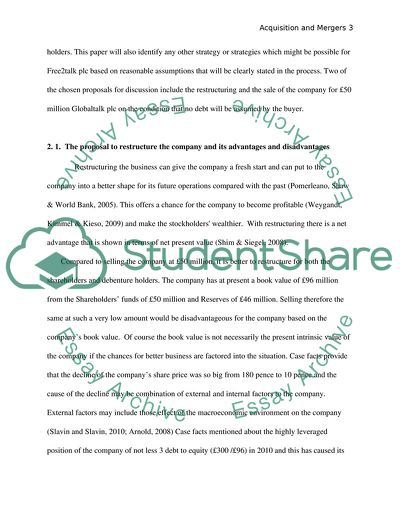Cite this document
(Acquisitions and Mergers: Critically evaluate the financial Essay, n.d.)
Acquisitions and Mergers: Critically evaluate the financial Essay. https://studentshare.org/finance-accounting/1754630-acquisitions-and-mergers-critically-evaluate-the-financial-information-given-and-acting-as-an-independent-consultant-report-to-the-board-of-directors-as-to-the-advantages-and-disadvantages-of-two-of-the-three-given-proposals-from-the-viewpoint-of-the-sh
Acquisitions and Mergers: Critically evaluate the financial Essay. https://studentshare.org/finance-accounting/1754630-acquisitions-and-mergers-critically-evaluate-the-financial-information-given-and-acting-as-an-independent-consultant-report-to-the-board-of-directors-as-to-the-advantages-and-disadvantages-of-two-of-the-three-given-proposals-from-the-viewpoint-of-the-sh
(Acquisitions and Mergers: Critically Evaluate the Financial Essay)
Acquisitions and Mergers: Critically Evaluate the Financial Essay. https://studentshare.org/finance-accounting/1754630-acquisitions-and-mergers-critically-evaluate-the-financial-information-given-and-acting-as-an-independent-consultant-report-to-the-board-of-directors-as-to-the-advantages-and-disadvantages-of-two-of-the-three-given-proposals-from-the-viewpoint-of-the-sh.
Acquisitions and Mergers: Critically Evaluate the Financial Essay. https://studentshare.org/finance-accounting/1754630-acquisitions-and-mergers-critically-evaluate-the-financial-information-given-and-acting-as-an-independent-consultant-report-to-the-board-of-directors-as-to-the-advantages-and-disadvantages-of-two-of-the-three-given-proposals-from-the-viewpoint-of-the-sh.
“Acquisitions and Mergers: Critically Evaluate the Financial Essay”. https://studentshare.org/finance-accounting/1754630-acquisitions-and-mergers-critically-evaluate-the-financial-information-given-and-acting-as-an-independent-consultant-report-to-the-board-of-directors-as-to-the-advantages-and-disadvantages-of-two-of-the-three-given-proposals-from-the-viewpoint-of-the-sh.


